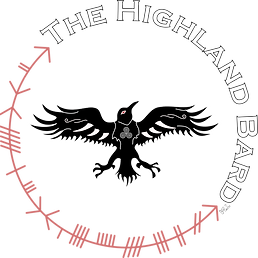The Picts and the Scots are best known for one reason: their stormy relationship in the fourth to eighth centuries AD which led to the eventual establishment of modern Scotland.
Roman historical sources relate that the Picts came from the North and raided Roman Britain in the last days before the Anglo-Saxon conquest of England. The Scots, possibly taking advantage of the removal of Roman troops from Britain early in the fifth century, arrived in western Scotland from Ireland to establish their hold on the area. Thus far the story is easy to follow, yet the Picts and Scots have left a tangle of myths, archaeological facts and historical snippets which have perplexed scholars.
A little was known archaeologically from the investigations at Dunadd in Argyll, one of the strongholds of the Dark Age Scots, and quite a lot was known about the sculptures set up by both Picts and Scots in various parts of their territories.
The word ‘Pict’ is a Roman one and was used from the late third century AD onwards to describe people living north of the Forth-Clyde line. The term, perhaps one of abuse, meant ‘the painted people’, and was probably an allusion to the designs with which they were said to tattoo their bodies. When we come to look at the finds and settlements it is possible to isolate some which have been claimed as Pictish metalwork and stones with Pictish symbols for example. It is notable that these Pictish features are almost exclusively high-status. The term ‘Pict’ cannot be assumed to be specifically generic, racial, cultural or national. The overwhelming evidence suggest that although the Roman authors can be read to refer to the Picts as though they were a tribal group, it makes more sense to read the Pictish archaeological material as indicating a ruling class of certain Celtic tribes rather than of a total society.
Research suggest that there were many tribal groups in northern Scotland so we cannot really at this early period, or later, speak of a ‘kingdom of the Picts’. The Pictish lands comprised many kingdoms with changing boundaries. The Irish called them the Cnuithni – the word is related to the word Pritani or Priteni, from which the modern word ‘Britain’ is derived.
The Picts were believed to have been very long-established in Britain. They can be traced in archaeology from the Bronze Age or even earlier. An Atlantic province can be recognized comprised of the northern isles and the north Scottish mainland and the western highlands and islands.
The people known as the Scots came from a part of what is now County Antrim, in Ireland, known as ‘Dalriada’. The name ‘Scot’ is an Irish one and means ‘bandits’ but was notably not given to them by the Romans or Britons on whom they preyed. The Scots spoke a primitive Old Irish, and their settlement led in due course to the establishment of Scots Gaelic (which is an offshoot of Irish) in Scotland. The language of the Picts was lost to us.
The Picts were finally absorbed by the Scots in the ninth century AD under the leadership of the Dalriadic king, Kenneth mac Alpin, though the events leading up to this are obscure. Thereafter Picts and Scots formed a united kingdom of Alban, though undoubtedly local traditions lingered long.
The archaeological evidence comprises a very large number of sculptured stones and much ornamental metalwork from Pictland, a few settlement sites and a scatter of graves. Of the settlements, Dunadd and Dunollie (in Dalriada), and Dundurn, Clatchard Craig and Burghead (in Pictland) are the most informative.
Source: The Picts and the Scots by Lloyd and Jenny Laing

